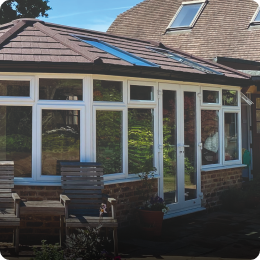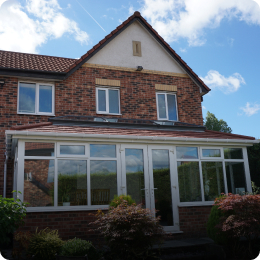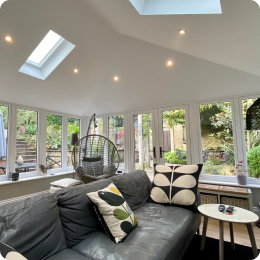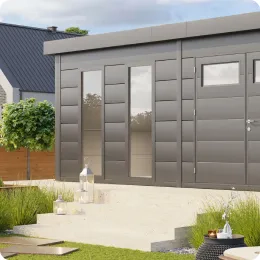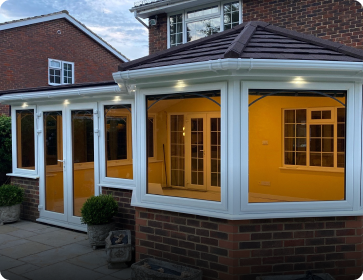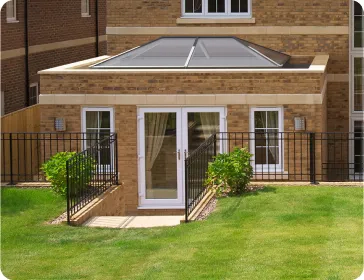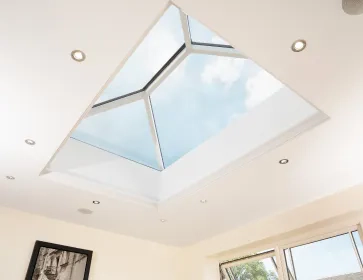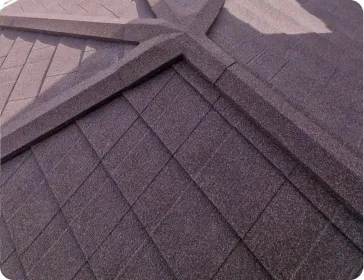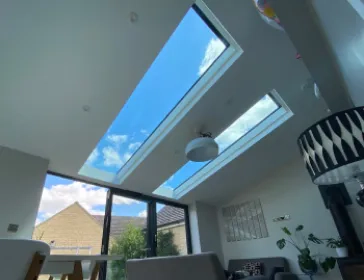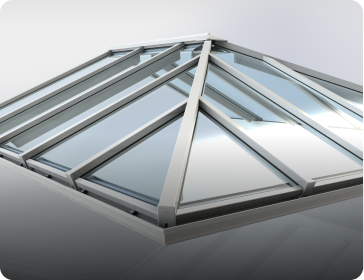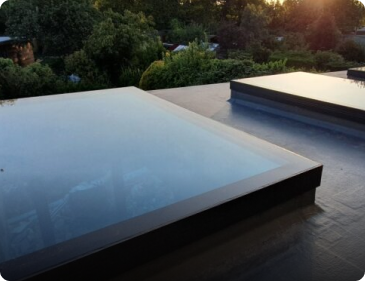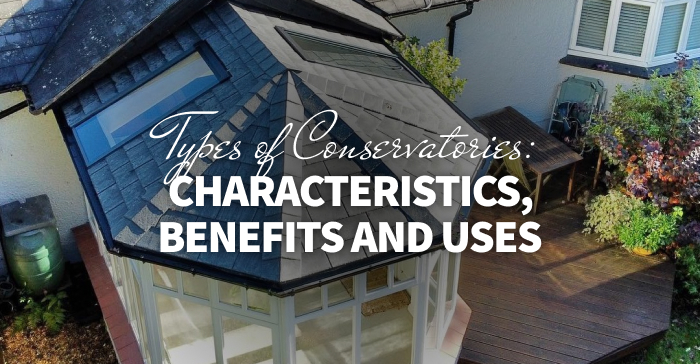
Whether you’re dreaming of a classic Victorian-style conservatory, a modern lean-to, or something entirely bespoke, understanding your options is key.
We’ll explore the distinct characteristics, benefits and potential uses of each type of conservatory, helping you make the right decision about which style best suits your home and lifestyle.
What is a Conservatory?
Originating from the 17th century, conservatories were initially used to cultivate and display exotic plants and flowers. Over time, they became versatile spaces for relaxation, dining or simply enjoying a beautiful view of the outdoors.
Today, conservatories are not just about greenery; they are multifunctional spaces that can be tailored to various needs – from a family room or entertainment area, to a relaxing space for all to enjoy. With advances in design and materials, modern conservatories offer enhanced comfort, energy efficiency and a wonderful aesthetic appeal.
Benefits of Adding a Conservatory
Transform your living space with a modern conservatory, designed to enhance comfort and style in your home. Here’s a glance at some of the benefits:
- Enhanced Insulation: modern conservatories are designed with improved insulation, ensuring a comfortable temperature throughout the year
- Noise Reduction: high-quality materials help in reducing external noise, providing a quiet indoor space
- Aesthetic Appeal: conservatories can enhance visual appeal with a sleek and attractive design
- Low Maintenance: when built with high-quality materials, conservatories require minimal upkeep, saving time and effort in maintenance
- Versatile Design: the flexibility in design allows conservatories to be tailored to various purposes – from a home office to a lounge area
- Property Value Increase: a well-designed conservatory has the potential to boost your property’s market value, making it a wise investment
- Structural Durability: constructed to last, conservatories are not only an aesthetic addition but can be a durable extension to your home, withstanding various environmental elements.
Types of Conservatories
Victorian Conservatory
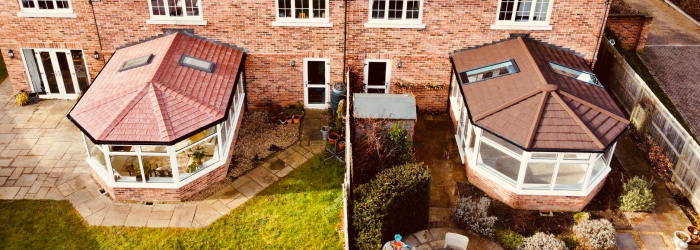
Victorian Conservatories are one of the most popular conservatory types. Found in both urban and rural homes, their timeless style, elegant design and modern functionality enhances any home.
Designed in the style of architecture popular during the Victorian era, which lasted from roughly the early to mid-19th century, Victorian conservatories are characterised by their ornate detailing, intricate ironwork, large glass panels, and pitched roofs.
Characteristics:
- Classic design
- Steeply pitched roof
- Ornate ridge details
- Bay-fronted for panoramic views
Benefits:
- Elegant, timeless design
- Multi-faceted shape for space and natural light
- Versatile use
Uses:
Flexible as a dining area, living space, playroom, or greenhouse; adds functional space and value.
Ideal for:
Traditional and period properties.
Edwardian Conservatory
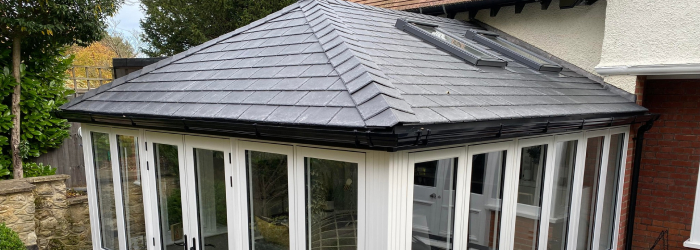
The Edwardian Conservatory draws inspiration from the architectural style of the Edwardian era, which lasted from approximately 1901 to 1910. Combining class and efficiency, they offer a spacious and stylish addition to various architectural styles.
Characterised by their square or rectangular shape, their classic and timeless design offers a bright and airy space that can be used as a dining area, lounge, or simply as an extension to your home’s living space.
Characteristics:
- Symmetrical, square or rectangular shape
- High-sloping roof for a spacious feel
Benefits:
- Maximises interior space with square/rectangular shape
- Clean lines
- Timeless appearance
Uses:
Ideal for a serene dining area, vibrant garden room, or a peaceful home office.
Ideal for:
Both modern and traditional homes.
Lean-to Conservatory
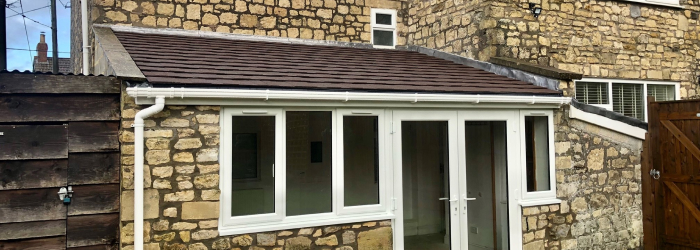
A Lean-To Conservatory, commonly known as sunrooms, offer an elegant, straightforward extension solution, popular for its versatility and light-filled space.
Considered the simplest conservatory design, they feature glass walls and a glass roof, allowing homeowners to enjoy natural light and outdoor views while being protected from the elements. The term “lean-to” refers to its design, which involves a single sloping roof that leans against the existing wall of a house.
Characteristics:
- Sleek design with a single sloped roof
- Typically rectangular shape
Benefits:
- Simple modern design
- Cost-effective
- Versatile design
- Ideal for limited spaces
Uses:
Serves as a cosy sunroom, dining area, home office, or children’s playroom.
Ideal for:
- Small gardens or contemporary properties
- Perfect for limited spaces or lower rooflines
Gable-Fronted Conservatory
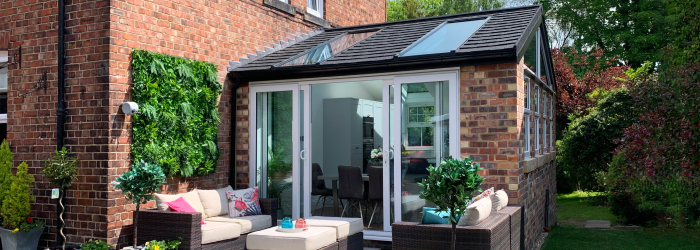
A gable-fronted conservatory is commonly found in residential properties. It typically features a steeply pitched roof with a gable end, creating a triangular shape at the front of the conservatory. This design allows for maximum natural light and creates a sense of space within the room.
Gable-fronted conservatories effortlessly elevate home living with their blend of functionality, spaciousness and elegance, making them a popular choice for homeowners.
Characteristics:
- Striking gable-fronted roof
- Spacious
- Symmetrical and clean lines
Benefits:
- Maximises light
- Adds architectural interest
- Ideal for openness, durability and aesthetics
Uses:
Luxurious lounge or dining area, art studio, elegant backdrop for social gatherings.
Ideal for:
Traditional homes with high ceilings.
P-Shaped Conservatory
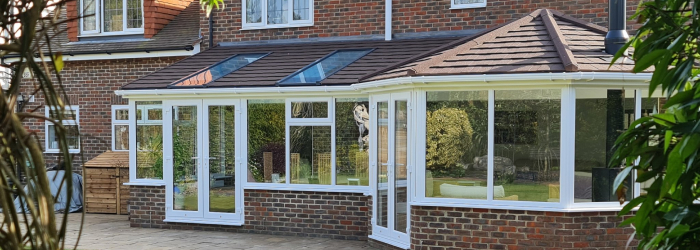
The P-Shaped Conservatory is a testament to architectural creativity, offering diverse spaces within one extension. It combines elements of a lean-to conservatory and a Victorian or Edwardian conservatory.
The design resembles the letter “P”, with one section extending outwards and another smaller section branching off from it at a perpendicular angle. This allows for versatility in the use of space, as the larger section can be used for dining or living areas, while the smaller section can be used as a cosy seating area.
Characteristics:
Combines Victorian and lean-to styles, the ‘P’ shape offers layout versatility
Benefits:
- Creates distinct zones
- Complements various house designs
- Provides an expansive, light-filled area
Uses:
Divisible into a lounge and dining room, perfect for entertainment, or as an indoor garden.
Ideal for:
Large properties with spacious gardens.
T-Shaped Conservatory
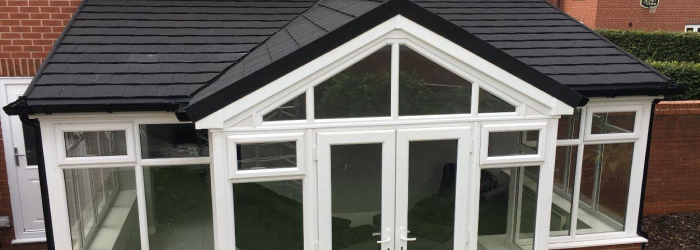
The T- Shaped Conservatory takes its name from its shape. Suited to large properties with lots of outside space, it offers a beautiful spacious and functional extension for relaxation and entertainment.
Designed to let in plenty of natural light and provide a space for indoor gardening, relaxation, or entertaining, this type of conservatory has a main section or body with an extended wing branching off, creating the T-shape.
Characteristics:
Distinctive ‘T’ layout- 7 walls, four sides and three front facing.
Benefits:
- Provides vast, versatile space
- Separates interior naturally
- Offers panoramic outdoor views
- Enhances aesthetics
Uses:
Ample space for dining and lounging, ideal for hosting, transforms into a luxurious garden space
Ideal for:
Large properties with extensive garden views
Orangery Conservatory
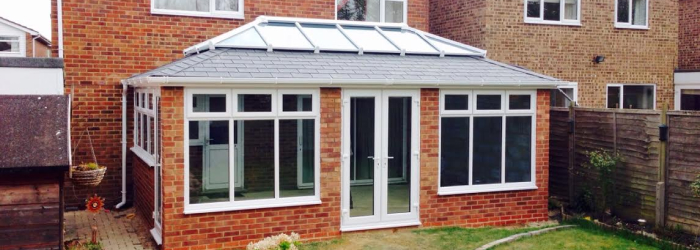
Orangery Conservatories are a brick structure with large windows and a flat roof with a glass lantern. The original orangeries in the 17th century had solid roofs, but in the 19th century began to feature the central glazed lantern to allow more light to flood in.
An Orangery offers a blend of traditional extension robustness and conservatory airiness, adding grandeur to your property.
Characteristics:
- Solid structure with brick bases
- Large windows
- Lantern roof
- Features expansive windows and glass roofs
Benefits:
- Abundant natural light
- Enhancing both the exterior and interior look of the home
- Adaptable to various bungalow types and personal styles
- Adds desirability, potentially making the property more profitable
- Well-insulated for comfort in every season
Uses:
Sophisticated dining room, high-end living space, bespoke kitchen extension.
Ideal for:
Luxury and period properties.
When looking at the different types of conservatories, remember to consider your home’s architectural style and the intended purpose. Factor in the space available, your budget and energy efficiency needs.
Gallery: See the Transformation
With SupaLite, our conservatory roofs can be customised to suit different conservatory types. Choose from colour-matched fascias, soffits, gutters and various tile and slate options, to ensure your new conservatory roof perfectly complements your home’s existing style.
Browse our gallery to see a diverse range of conservatories, each impressively enhanced with our stylish roofing options.
Explore our range of roofing solutions on our products page. For more advice or information, get in touch today for a free quote.

